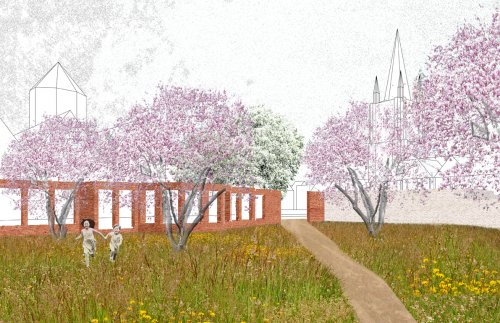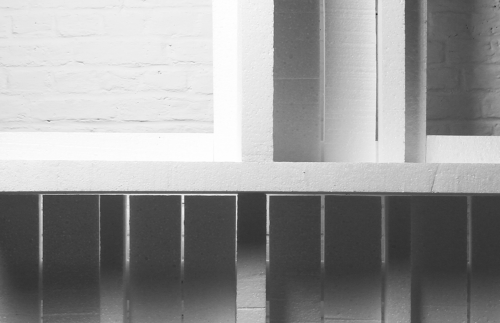
The resilient city
While the Flemish landscape is coming under increasing pressure from burgeoning urbanisation, our cities, on the other hand, contain very little in…

New living
It has now been made clear that 330 000 additional homes will need to be built in Flanders over the coming decades. As a consequence, there is an urgent…
1. fascination and affinity.
Our projects regularly touch upon issues that lie close to our hearts. Ones which we believe go beyond the constraints of any specific project or the interests of any particular client. Issues which have a broader social and cultural significance. For that very reason, they may not form part of our response to the spatial design task at hand. Nonetheless, they continue to inspire a certain fascination and affinity and because of that, we are happy to identify them as “prototypes”. As such, they represent a critical driving force in the development of much of our work. They are concrete, tangible challenges that proactively and continuously fuel work within the structure of our bureau. Often without a specific client, within the framework of self-commissioned research.
2. origin and exemplar.
pro·to·type (noun; plural: prototypes) 1. original model 2. exemplar, ideal
The meaning of the word “prototype” is twofold. On the one hand, it refers to the original model. That which offers a solution to any given spatial problem. It is often the case that similar challenges are inherent to a series of projects. One important aspect of the prototype as original model is therefore its concrete applicability to a range of design tasks.
On the other hand, the word also signals the ambitious quest for the ideal, the exemplar. We believe that within current design practice, the concept of 'failure' is a crucial element in the equation leading to genuine investigative design. However, it is almost always impossible to fail within the context and constraints of a particular project or assignment. The ambition of the prototype must therefore be to facilitate a shift within the dominant paradigms of developing and constructing space, and this through design-based research.
The patience of projects on paper and the speed with which thought and research come to fruition within design practice thereby stand in stark contrast to the inertia of matter and construction. It is precisely in this sense, however, that the prototype is able to reconcile investigation and action in order to arrive at concrete and innovative spatial solutions.
3. the European condition.
The context in which our projects come to fruition necessitates this way of working. We call this context the “European condition”. It is one characterised at present by a period of contraction and crisis. It refers to the act of formulating spatial solutions in a context of growing resource scarcity and a more sparing use of materials despite increasing complexity and ambitions. We experience this as a significant challenge which in turn harbours several major opportunities for our design practice.
The barriers to rapid progress towards greater sustainability in our European societies are painfully obvious. Here, we view sustainability in a broad sense: as a kind of connectedness with the surrounding context. It is not – or at least not primarily – about technology but about the power for people to shape their lives in a way which does not compromise that of future generations. The topics which we propose as prototypes are therefore primarily determined by the European context in which they become manifest. Subsequently, this also means that they are subject to change within this context and evolve in accordance with the inherent challenges of our concrete projects.
4. ongoing investigations.
We have initiated a number of investigations which we believe reflect urgent social issues in the contexts of the European condition:
- New living – the relationship between typology, durability and affordability
- The resilient city – on urban landscaping and urban ecology
- The sustainable transition of existing patrimony in a shrinking economy
- Collectivity as the encounter between public and private space
- Structure, skin and tectonics as the substrate of architecture
- Ensuring spatial quality within PPP and DB (FMO) projects
With these issues as anchor points, we endeavour to develop a dynamic learning space. The aim is to formulate the challenges and potentials explicitly, to develop relevant tools and thus arrive at concrete applications in the context of our various projects.